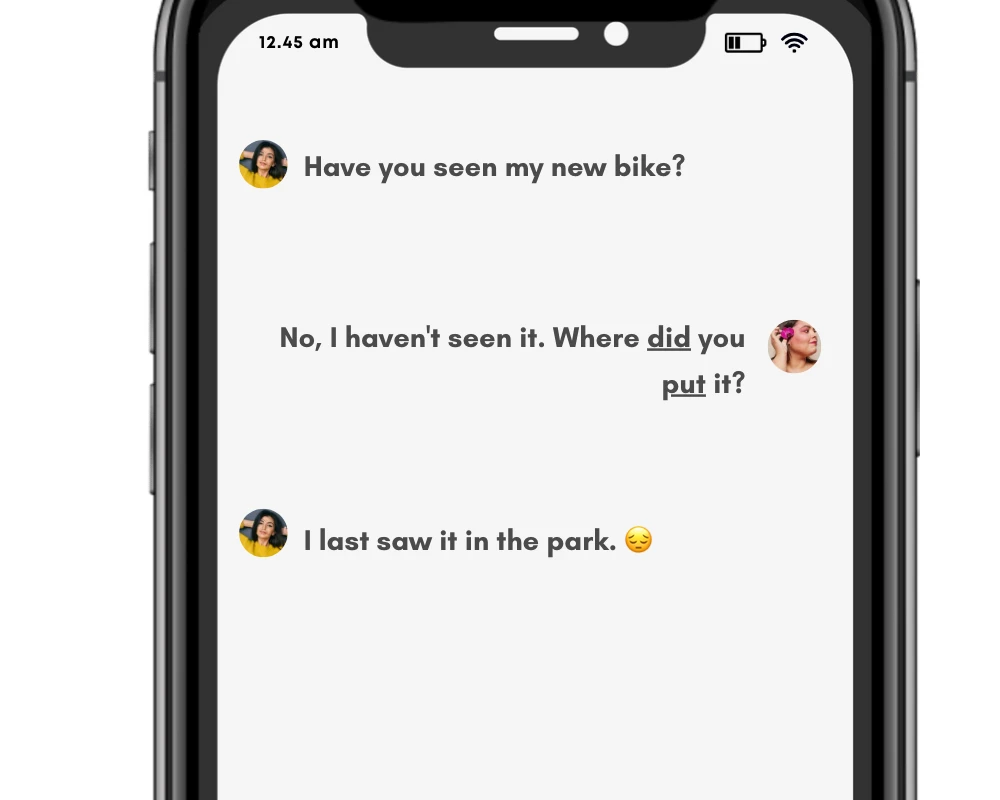
What's the past tense of "see"?
The simple past tense of see is saw, and the past participle is seen. Use saw for simple past and seen for past participle forms.
Definition of see
The Oxford English Dictionary defines see as "to perceive with the eyes; to be aware of or affected by; to understand or recognize." It's used in both literal and figurative senses, from visual perception to understanding concepts.
- The past tense of see is saw.
- The past participle of see is seen.
Verb forms of 'see'
Note: We avoid the past continuous (was + seeing) with stative verbs, since these verbs have no clear start or finish as dynamic verbs do. Stative verbs (which represents mental processes, feelings, or internal states of existence), use the simple past conjugation or past perfect tenses or aspects.
Is "see" a regular or irregular verb?
Note: Regular verbs end in -ed in the past tense. Any other verb ending is considered irregular.
While an irregular verb, 'see' shows a highly common verb-conjugation pattern. Similar to other verbs like take/took/taken, break/broke/broken, and wake/woke/woken, see uses different forms for past tense and past participle.
When to use "saw" vs. "seen"
I saw a shooting star last night.
I have seen that movie before.
The participle form of a verb (shown in the second sentence) uses the auxiliary verb have as a contraction, I've.
When auxiliaries like have or had appear in the same sentence as a past participle verb form, this indicates that the verb's aspect is in the present or past perfect, and not the simple past tense.
Remember, a participle always uses a helper verb to form the complete tense or aspect. Simple tenses, on the other hand, can stand on their own.
Similar irregular verbs
While an irregular verb, 'see' shows a highly common verb-conjugation pattern. Similar to other verbs like take/took/taken, break/broke/broken, and wake/woke/woken, see uses different forms for past tense and past participle.
Sentence examples: see, saw, seen
• I see a bird in the tree.
• She sees the problem clearly.
• They see the sunset every evening.
• I saw a shooting star last night.
• She saw the movie yesterday.
• They saw the accident happen.
• I have seen that movie before.
• She has seen the doctor already.
• They had seen the show before it closed.
Synonyms & nearby words
Synonyms for see
Nearby phrases
Practice: saw or seen
He ______ a shooting star streak across the night sky.
She was certain she had ______ a ghost in the old house.
My grandmother ______ things differently due to her experience.
After ______ the evidence, the jury made its decision.
Did you ______ where I put my keys?
FAQs
What is the simple past tense of "see"?
What is the past participle of "see"?
Is "see" a regular or irregular verb?
When do I use "saw" vs "seen"?
Can "saw" be used as a past participle?
Sources
-
Oxford English Dictionary. "see, v." OED Online. Oxford University Press. Date of access 15 Jan. 2025.
-
Cambridge Dictionary. "see." Cambridge University Press. Date of access 15 Jan. 2025.
Advertisement








.webp&w=3840&q=75)